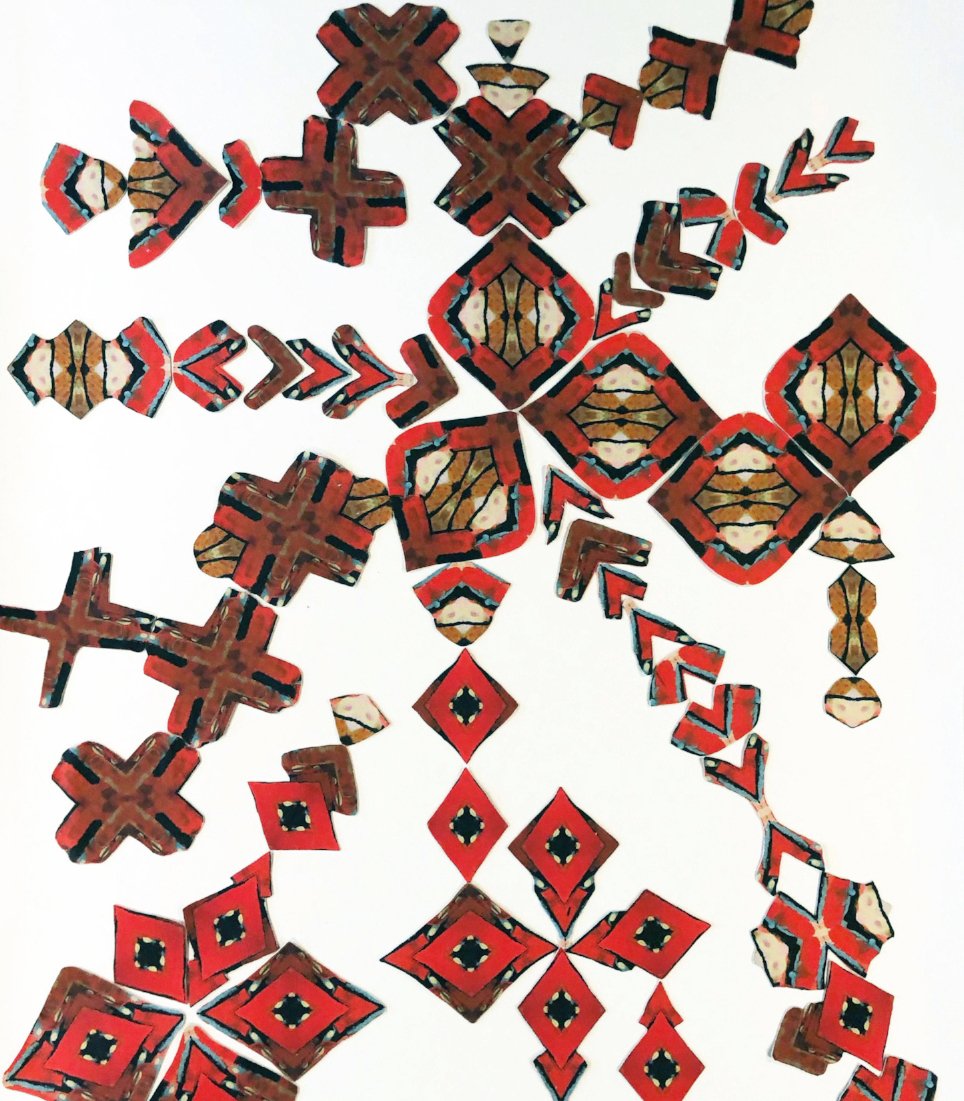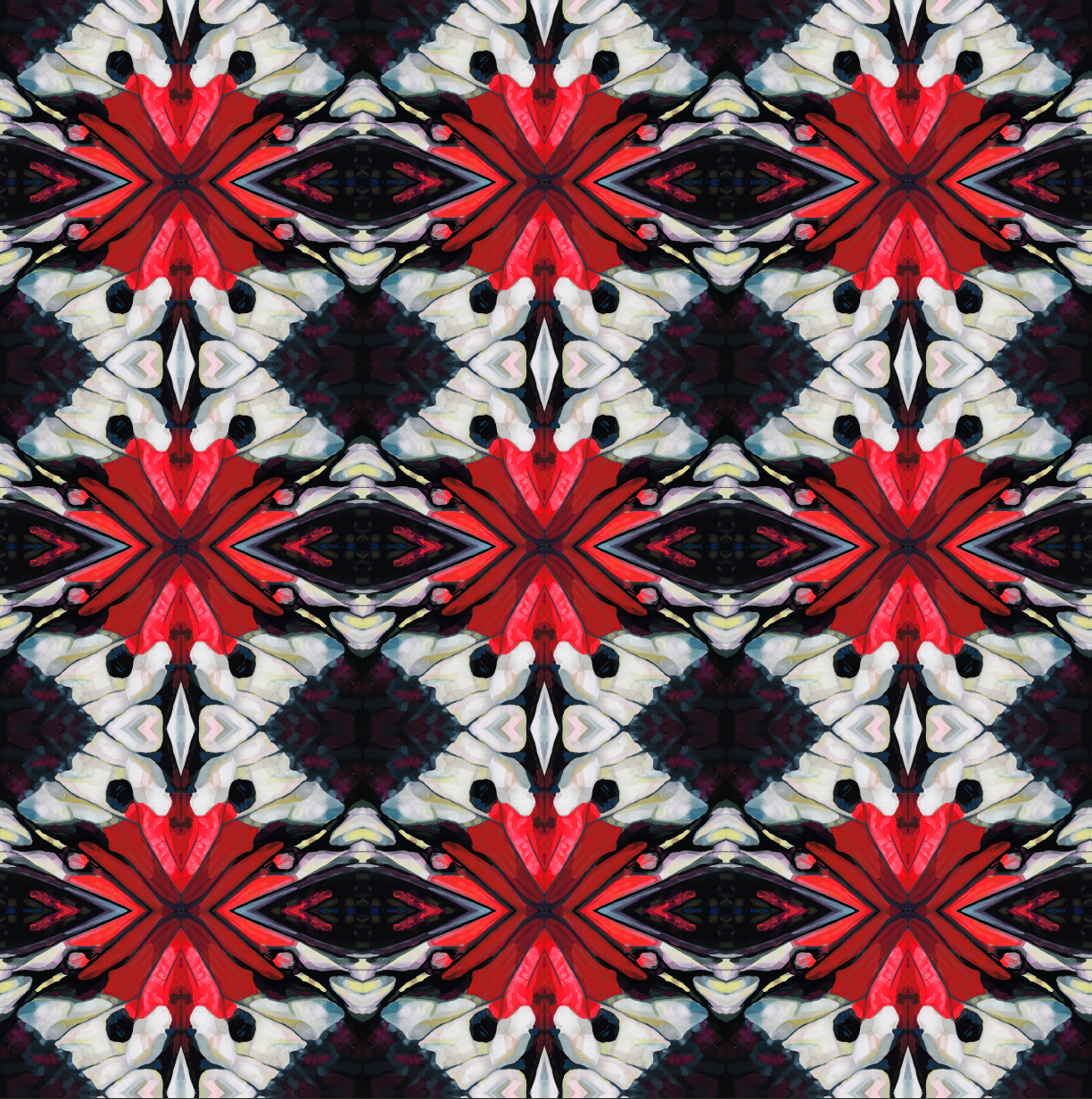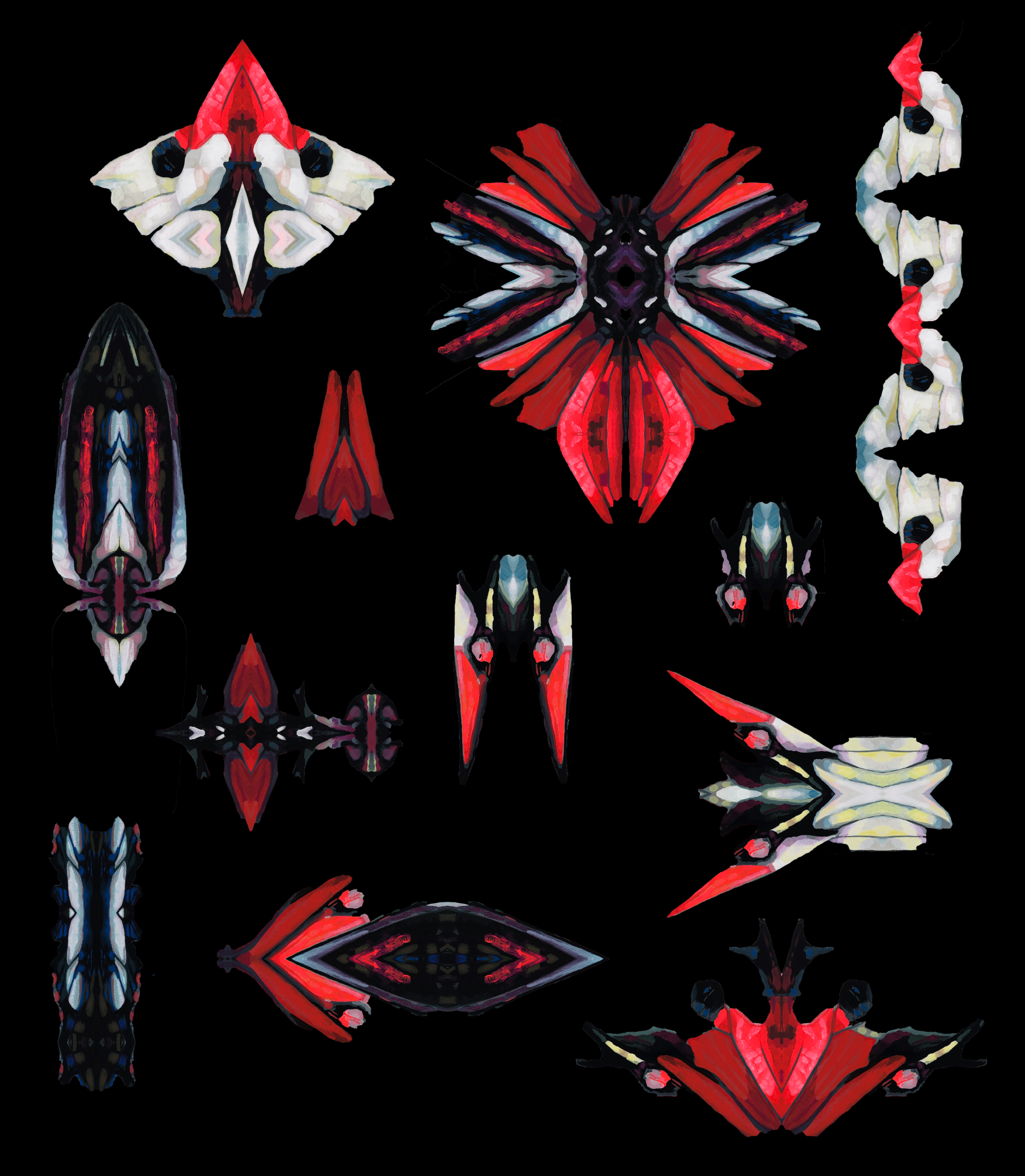The fragment series: Symmetry & AnalogY
The Red Garden Animated Wall Paper- Hand Painted Pattern Fragments & Computational Animation
The Fragment Series is work from the Coded Textile Project.
The Fragment series makes chaos of order, and new meaning from chaos. Each work begins as a regular pattern design that is then decomposed- by the physical cutting of textile or the digital segmentation of a file. The result is a series of irregular fragments, pieces of pattern, that can be recombined. Symmetry operations are the basic rules used to make combinations out of the fragments. The series demonstrates how bilateral symmetry mimics life and the functions of stacking, scale change and location result in analogies of gardens and growth.
Methods include painting, digital print design, cut textile and computational sketches.
The Coded Textile Project uses computation to explore materials and meaning in textile embellishment. In the context of the project, “coded” is a process of designing a system of signs, organized by rules, procedures and relationships, using either analog or digital tools. Here machine thinking generates new possibilities for print, embroidered/embellished and woven design.
The project also takes the approach that textile embellishment is itself a “code”- storing information, abstracting meaning, formulating new symbols or communication systems. The relationship of embellishment to location is central to this investigation of “embellishment semiotics”. Our digital sketches and textile outputs explore how technology impacts the interaction of surface design and environment.
Digital Print & Cut Textile wall collage
Early experiments involve the design of a digital print on cotton. The cloth is then cut intuitively into fragments. These become characters to use in building new compositions.
The red garden animated wall Paper
Project Creative Code Designer: Anna Garbier
LINK TO INTERACTIVE WORK
Trees, Flowers & Bees/ Symmetry Combinations
The Red Garden: Animated Wallpaper
The red garden is an animated wallpaper which combines fragments into the analogy of a garden. This work carefully devised a series of rules based in symmetry repeats and the proximity of fragments to build aggregates that reference trees, flowers and birds.







